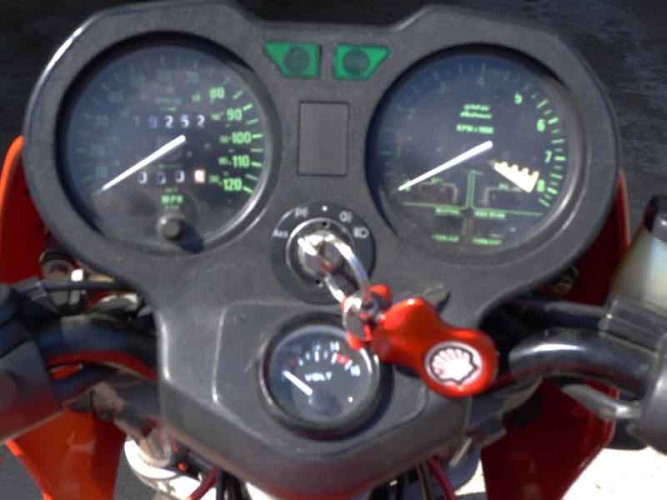trying to keep up with the r65 post on starting. here is another r65 electrical question. you would think these were Brit Bikes.
i am planning to ride my somewhat refurbished 1981 R65 a grand distance of 350 miles one day soon. But on a test ride yesterday i noticed that the voltage stays at about 12.1 down to 11 volts, never up to 13 or so as i would expect when running along at 2500 rpm or so. i accessorized a plug so i could run my heated vest, but that didn't seem to matter much on the voltage reading between vest on and vest off.
back in the day, when i rode an R65 A LOT, with no mechanical insight into the thing, it was typical for the bike's battery to run down when used commuting in stop and go traffic. Thus i always parked on hills. and charged it up at home. not an issue when doing long distance touring. that was my life for about ten years and 120,000 miles until some person set fire to the bike and destroyed it.
and charged it up at home. not an issue when doing long distance touring. that was my life for about ten years and 120,000 miles until some person set fire to the bike and destroyed it.
well here i am back into one. any suggestions on what steps i should take to increase my comfort factor the bike won't turnover if i stop at mile 200 or so? what normal voltage should i be seeing? i am not sure the voltmeter on the bike is accurate, and haven't checked it against my meter yet.
i am planning to ride my somewhat refurbished 1981 R65 a grand distance of 350 miles one day soon. But on a test ride yesterday i noticed that the voltage stays at about 12.1 down to 11 volts, never up to 13 or so as i would expect when running along at 2500 rpm or so. i accessorized a plug so i could run my heated vest, but that didn't seem to matter much on the voltage reading between vest on and vest off.
back in the day, when i rode an R65 A LOT, with no mechanical insight into the thing, it was typical for the bike's battery to run down when used commuting in stop and go traffic. Thus i always parked on hills.
well here i am back into one. any suggestions on what steps i should take to increase my comfort factor the bike won't turnover if i stop at mile 200 or so? what normal voltage should i be seeing? i am not sure the voltmeter on the bike is accurate, and haven't checked it against my meter yet.

